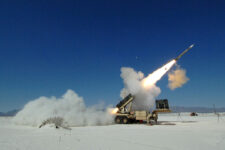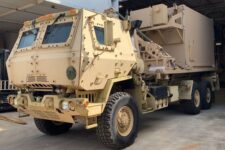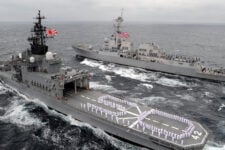WASHINGTON: The White House has made the day of one Air Force Force lieutenant colonel, one familiar to readers of Breaking Defense.
That’s right! Dan Ward, who recently penned a piece for us about trimming the F-35 buy to keep the A-10 fleet flying (I think it’s a bad idea, but who says I’m always right), has received the official imprimatur of the Office of Science and Technology Policy for the acquisition approach he created and advocates.
The nod came in a paper released by OSTP, the White House tech policy office, called Innovative Contracting Case Studies.
OSTP mentions two other acquisition approaches of note:
Other Transactions: A method of providing the flexibility needed to engage commercial companies that are not traditional government contractors. Our readers should be pretty familiar with these. Bill Greenwalt discussed them in his series about acquisition reform.
The other is actually a philosophic approach dubbed agile. “Agile is not one specific method; Agile is both a philosophy and an umbrella term for a collection of methods or approaches that share certain common characteristics.” It applies largely to software development.
So back to Dan’s more general approach. Here’s their description of FIRE, which we’re sure Dan didn’t write as it sounds way too much like something out of a policy shop:
“The FIRE (Fast, Inexpensive, Restrained, Elegant) method (formerly FIST – Fast, Inexpensive, Simple, Tiny) provides a heuristic-based decision-making framework designed to foster innovation by establishing constraints on time, money, complexity, and size. The basic premise is that innovation does not have to cost so much, take so long, or be so complicated. The data strongly suggests that the best outcomes are produced by small teams working with short schedules, tight budgets, and deep commitments to simplicity.”
Dan’s approach used to be called FIST — Fast, Inexpensive, Simple and Tiny — but the multi-talented fellow came up with a better acronym. BTW, FIRE stands for Fast, Inexpensive, Restrained, Elegant.
Let’s look at what this might mean, both for Dan and for defense acquisition. We all know the department is not going to suddenly become adept and adopt his approach wholesale. Really large programs would find this difficult, especially given the fact Congress likes the data which the DFARS requires. Having covered acquisition issues for more than 15 years, I think Dan’s FIRE approach is well suited to new starts of small- and medium-sized programs.. Sadly, there probably won’t be a great number of those — or big programs either — for much of the next decade.
But Dan has argued in these very pages that:
Whether we’re building an infantry weapon, a spy plane, a nuclear missile, a fighter jet, a supercomputer or a nuclear-powered submarine, there’s always a way to quickly deliver high-performance at a low cost.
So he clearly thinks FIRE can be set under any program to improve it.
Where might the talents of such a disruptor be best used? He might shuffle over to Big Safari, the hotshot Air Force acquisition shop. Might the Joint Requirements Oversight Council hire Dan? After all, he identifies requirements as a hugely important part of getting these programs right. Or perhaps he might suffer the possibly deadly embrace of the offices of acquisition, technology and logistics, Frank Kendall’s shop. After all, he wants to improve acquisition and that’s presumably the best place to do it. Or, maybe the White House is the place for Dan? He could stir things up nicely across the entire government from a perch over there. It might not last too long, but… Ah, it must be nice to have so many possibilities opening up.
For those who like details, Dan is currently stationed at Hanscom Air Force Base. He is the author of FIRE: How Fast, Inexpensive, Restrained, and Elegant Methods Ignite Innovation, published by HarperBusiness.
No service can fight on its own: JADC2 demands move from self-sufficiency to interdependency
Making all-domain operations a warfighting capability means integrating, fusing, and disseminating a sensor picture appropriate for a particular theater segment, not all of them, says the Mitchell Institute’s David Deptula.





























